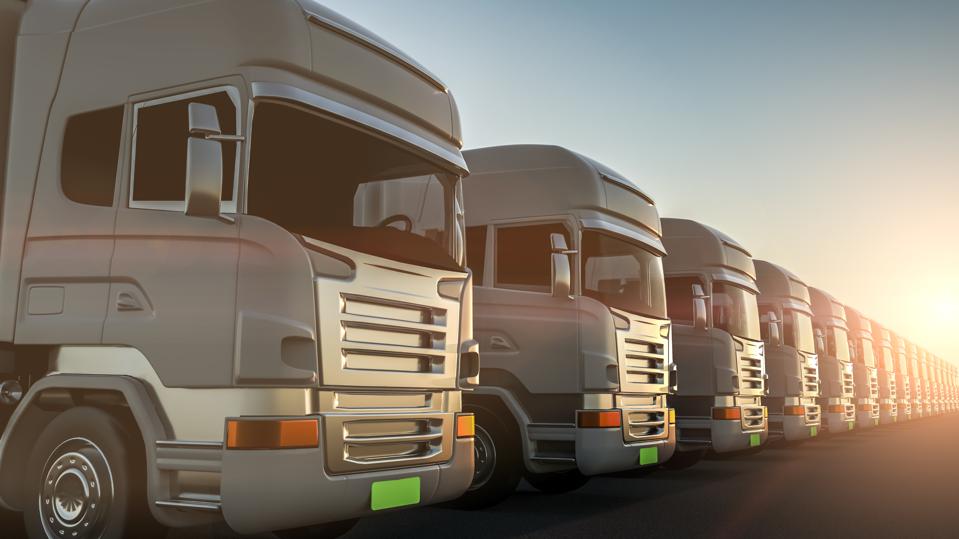Written by Fred Krupp, president of Environmental Defense Fund.

The Biden administration should put the United States on a path to 100% zero pollution new trucks … [+]
getty
President-elect Biden has made clear that clean transportation is at the heart of his plan to Build Back Better. That’s the right focus — but it can’t be accomplished without a strong emphasis on America’s 13 million heavy duty trucks and buses, which produce significantly more climate pollution than the entire British economy.
To achieve its goal, the Biden administration should put the United States on a path to 100% zero pollution new trucks and buses by 2040 — and commit to quickly setting ambitious pollution standards to drive this transition.
More Jobs and Healthier Communities
The world has already begun moving toward zero pollution electric vehicles. Every major manufacturer from Ford to Cummins to Freightliner has made significant investments; GM just jumped into the electric delivery-van market with FedEx as its first customer. The race is on to build market share, and the only real question is whether these good new jobs will be created here in the U.S. or just in Europe and China.
In 2019, China dominated 95% of this fast-growing market. It accomplished this through requirements for zero-emission truck and bus manufacturing and policies to help ease and accelerate the transition. Now the European Union and its member states are doing the same thing — setting strong vehicle standards and making investments to expand domestic supply chains for batteries and other key components.
MORE FOR YOU
And it’s working for them. In response to these policy directives and public investments, European truck makers have pledged to transition their production lines to zero-pollution technologies a decade earlier than planned.
Soon zero pollution trucks will be a familiar sight on American highways — and delivering packages in every neighborhood. The Biden administration wants those trucks to roll off assembly lines in places like Hamtramck, MI or Spartanburg, SC, not arrive by boat from Hamburg and Shanghai. So it needs to act quickly — with an Executive Order setting goals that help drive investment in American electric truck manufacturing to create jobs for communities that need them.
Clean trucks and buses can also help address inequities in exposure to air pollution, by bringing health and economic benefits to communities of color and lower-income neighborhoods. These Americans often live near ports, highways, distribution centers and industrial sites — leading to significantly increased exposure to harmful air pollution from trucks.
Just one example: Data from Oakland, California shows that those who live in closer proximity to heavy-duty truck traffic live shorter lives than those that don’t. One study by the California Air Resources Board found that trucks contributed over 70% of the elevated cancer risk in West Oakland, the community adjacent to the Port of Oakland. Clean truck standards can help reduce hundreds of millions of metric tons of climate pollution and hundreds of thousands of tons of local health harming pollutants. Medium and heavy-duty vehicles make up approximately 4% of all vehicles on the road, but contribute 90% of all nitrogen oxides pollution from diesel mobile sources.
Clean school buses are also critically important. Currently, 99% of the nation’s school buses emit harmful pollutants, contributing to asthma, cancers and other ailments. This impact, particularly on disadvantaged communities, is why buses — along with urban delivery trucks — should transition to zero pollution vehicles even earlier, by 2035.
The technology is ready
At least 125 zero-emission truck and bus models are in production, development or demonstration in the US. There are models for each major segment of the heavy-duty truck market, including transit and school buses, delivery vans, box trucks and combination trucks. Established manufacturers such as Mack and recent entrants like Rivian and Lion Electric are already producing. And companies from Amazon to Walmart to Pepsi are looking to switch their fleets to zero emissions trucks.
How to get the job done
Despite all of this promising activity, federal standards are needed to set a clear pathway. Without it, U.S. manufacturers will be hesitant to invest in full-scale production capacity. As these companies have proven time and time again, they can rise to meet any challenge — but they need a predictable business climate to get out of the gate.
Congressional investment will also be needed to promote job growth and accelerate the transition in the early years: policies and programs to help local governments and school districts get electric work trucks and school buses on the road, make sure charging infrastructure is in place, and build out domestic supply chains for batteries. The new administration can get things started by using its authority under current law.
Joe Biden ran for president on the strongest climate action platform in American history, with a promise to rebuild our COVID-battered economy in ways that will make the country stronger and more equitable for the long term. But unless he seizes the opportunity presented by electric trucks and buses as well as cars, he’ll be missing a chance to drive good jobs and promote environmental justice. Turning the innovative genius and industrial might of America to the problem of clean trucks and buses is central to achieving his goals.
from WordPress https://ift.tt/39B80Bs
via IFTTT

0 Comments